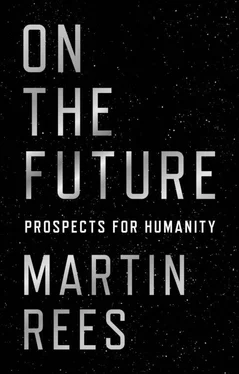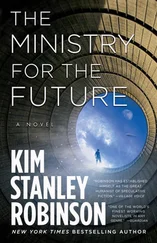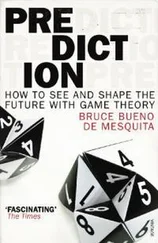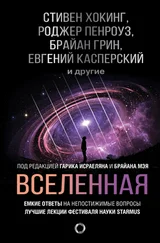Second only to Popper, it is the American philosopher Thomas Kuhn—with his concept of ‘normal science’ being punctuated by ‘paradigm shifts’—who has gained traction. [4]The Copernican revolution, overturning the concept of an Earth-centred cosmos, qualifies as a paradigm shift. So does the realisation that atoms are governed by quantum effects—utterly counterintuitive and still mysterious. But many of Kuhn’s disciples (though maybe not Kuhn himself) used the phrase too freely. For instance, it’s routinely claimed that Einstein overthrew Newton. But it’s fairer to say that he transcended Newton. Einstein’s theory applied more widely—to contexts where forces are very strong or speeds very high—and gave a much deeper understanding of gravity, space, and time. Piecemeal modification of theories, and their absorption in new ones of greater generality, has been the pattern in most sciences. [5]
The sciences demand a range of different types of expertise and different styles; they can be pursued by speculative theorists, by lone experimenters, by ecologists gaining data in the field, and by quasi-industrial teams working on giant particle accelerators or big space projects. Most commonly, scientific work involves collaboration and debate in a small research group. Some people aspire to write a pioneering paper opening up a subject; others gain more satisfaction from writing a definitive monograph tidying up and codifying a topic after it’s become well understood.
Indeed, the sciences are as diverse as sports. It’s hard for generic writing about sports to get beyond vacuous generalities—extolling humanity’s competitive streak and so forth. It’s more interesting to write about the distinctive features of a particular sport; still more compelling are the particularities of especially exciting games and the personalities of key players. So it is with the sciences. Each particular science has its methods and conventions. And what most compels our interest is the fascination of the individual discovery or insight.
The cumulative advance of science requires new technology and new instruments—in symbiosis, of course, with theory and insight. Some instruments are ‘tabletop’ in scale. At the other extreme, the Large Hadron Collider at CERN in Geneva, 9 kilometres in diameter, is currently the world’s most elaborate scientific instrument. Its completion in 2009 generated enthusiastic razzmatazz and wide public interest, but at the same time questions were understandably raised about why such a large investment was being made in the seemingly recondite science of subnuclear physics. But what is special about this branch of science is that its practitioners in many different countries have chosen to commit most of their resources over a time-span of nearly twenty years to construct and operate a single vast instrument in a European-led collaboration. The annual contribution made by participant nations (like the United Kingdom) amounts to only about 2 percent of their overall budget for academic science, which doesn’t seem a disproportionate allocation to a field so challenging and fundamental. This global collaboration on a single project to probe some of nature’s most fundamental mysteries—and push technology to its limits—is surely something in which our civilisation can take pride. Likewise, astronomical instruments are run by multinational consortia, and some are truly global projects—for instance, the ALMA radio telescope in Chile (Atacama Large Millimeter/Submillimeter Array) has participation from Europe, the United States, and Japan.
Those embarking on research should pick a topic to suit their personality, and also their skills and tastes (for fieldwork? For computer modelling? For high-precision experiments? For handling huge data sets? And so forth). Moreover, young researchers can expect to find it especially gratifying to enter a field where things are advancing fast—where you have access to novel techniques, more powerful computers, or bigger data sets—so that the experience of the older generation is at a deep discount. And another thing: it is unwise to head straight for the most important or fundamental problem. You should multiply the importance of the problem by the probability that you’ll solve it, and maximise that product. Aspiring scientists shouldn’t all swarm into, for instance, the unification of cosmos and quantum, even though it’s plainly one of the intellectual peaks we aspire to reach, and they should realise that the great challenges in cancer research and in brain science need to be tackled in a piecemeal fashion, rather than head-on. (As mentioned in section 3.5, investigating the origin of life used to be in this category, but it now is deemed timely and tractable in a way it wasn’t until recently.)
What about those who switch to a new field of science in mid-career? The ability to bring in new insights, and a new perspective, is a ‘plus’—indeed, the most vibrant fields often cut across traditional disciplinary boundaries, On the other hand, it’s conventional wisdom that scientists don’t improve with age—that they ‘burn out’. The physicist Wolfgang Pauli had a famous put-down for scientists past thirty: ‘still so young, and already so unknown’. But I hope it’s not just wishful thinking on the part of an aging scientist to be less fatalistic. There seem to be three destinies for us. First, and most common, is a diminishing focus on research—sometimes compensated by energetic efforts in other directions, sometimes just by a decline into torpor. A second pathway, followed by some of the greatest scientists, is an unwise and overconfident diversification into other fields. Those who follow this route are still, in their own eyes, ‘doing science’—they want to understand the world and the cosmos, but they no longer get satisfaction from researching in the traditional piecemeal way: they over-reach themselves, sometimes to the embarrassment of their admirers. This syndrome has been aggravated by the tendency for the eminent and elderly to be shielded from criticism—though one of the many benefits of a less hierarchical society is that this insulation is now rarer, at least in the West; moreover, the increasingly collaborative nature of science makes isolation less likely. But there is a third way—the most admirable. This is to continue to do what one is competent at, accepting that there may be some new techniques that the young can assimilate more easily than the old, and that one can probably at best aspire to be on a plateau rather than scaling new heights.
There are some ‘late-flowering’ exceptions. But whereas there are many composers whose last works are their greatest, there are few scientists for whom this is so. The reason, I think, is that composers, though influenced in their youth (like scientists) by the then-prevailing culture and style, can thereafter improve and deepen solely through ‘internal development’. Scientists, in contrast, need continually to absorb new concepts and new techniques if they want to stay at the frontier—and that’s what gets harder as we get older.
Many sciences—astronomy and cosmology among them—advance decade by decade so that practitioners can observe an ‘arc of progress’ during their career. Paul Dirac, a leader in the extraordinary revolution in the 1920s that codified quantum theory, said that it was an era when ‘second-rate’ people did ‘first-rate’ work. Luckily for my generation of astronomers, that’s been true in our field in recent decades.
The best laboratories, like the best start-ups, should be optimal incubators of original ideas and young talent. But there’s an insidious demographic trend that militates against this in traditional universities and institutes. Fifty years ago, the science profession was still growing exponentially, riding on the expansion of higher education, and the young outnumbered the old; moreover, it was normal (and generally mandatory) to retire by one’s mid-sixties. The academic community, at least in the West, isn’t now expanding much (and in many areas has reached saturation level), and there is no enforced retirement age. In earlier decades, it was reasonable to aspire to lead a group by one’s early thirties—but in the United States’ biomedical community, it’s now unusual to get your first research grant before the age of forty. This is a very bad augury. Science will always attract ‘nerds’ who can’t envisage any other career. And laboratories can be staffed with those content writing grant applications, which usually fail to get funding. But the profession needs to attract a share of those with flexible talent, and the ambition to achieve something by their thirties. If that perceived prospect evaporates, such people will shun academia, and maybe attempt a start-up. This route offers great satisfaction and public benefit—many should take it—but in the long run it’s important that some such people dedicate themselves to the fundamental frontiers. The advances in IT and computing can be traced back to basic research done in leading universities—in some cases nearly a century ago. And the stumbling blocks encountered in medical research stem from uncertain fundamentals. For instance, the failure of anti-Alzheimer’s drugs to pass clinical tests, which has caused Pfizer to abandon its programme to develop neurological drugs, may indicate that not enough is known about how the brain functions and that the effort should refocus on basic science.
Читать дальше


![Мартин Рис - Всего шесть чисел. Главные силы, формирующие Вселенную [litres]](/books/414169/martin-ris-vsego-shest-chisel-glavnye-sily-formir-thumb.webp)









